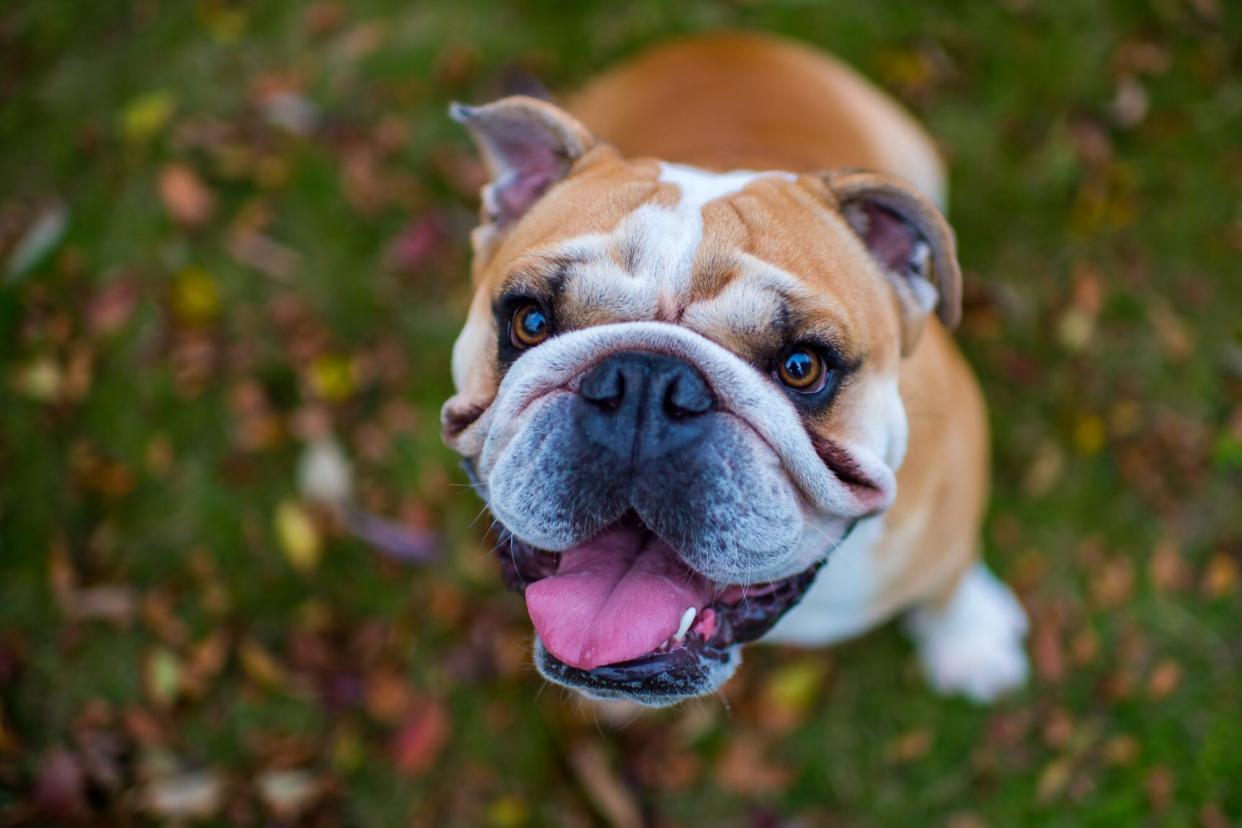Do You Know How to Spot the Signs of Hypothyroidism in Dogs?

Brighton Dog Photography / Getty
The thyroid glands, located beside the trachea, are small yet powerful. They produce several hormones—thyroxine (T4) and triiodothyronine (T3)—that regulate a dog's metabolism. Metabolism describes the process by which the body uses energy.
When things go awry and the thyroid glands stop producing and releasing enough hormones, your dog's body will be affected in ways big and small. Here, we'll go through all the details you need to know about hypothyroidism in dogs, including its causes, symptoms, diagnosis, and treatment.
What Causes Hypothyroidism in Dogs?
There are two main causes of hypothyroidism in dogs that make up about 95 percent of cases.
The most common cause is lymphocytic thyroiditis. This genetic condition occurs when a dog's immune system incorrectly sees the thyroid glands as foreign and attacks them.
The second main cause is idiopathic thyroid gland atrophy, which has no known cause and isn't well understood. It causes the thyroid tissue to be replaced by fat tissue.
Other causes include thyroid cancer, but they are rare.
Dog Breeds Most Susceptible to Hypothyroidism
Hypothyroidism typically affects middle-aged to senior dogs, about 4 to 10 years old. Although any breed can be affected, hypothyroidism occurs most commonly in medium- to large-breed dogs. Susceptible breeds include:
For unknown reasons, neutered male dogs and spayed female dogs are also susceptible to hypothyroidism.
Signs of Hypothyroidism in Dogs
Because the thyroid glands play a significant role in metabolism, hypothyroidism can cause problems throughout the body. The signs are highly variable and aren't specific to hypothyroidism.
The most common signs of hypothyroidism in dogs include:
Weight gain, independent of appetite
Excessive shedding in locations like the nose, neck, and tail
Intolerance to cold
Dry, dull coat
Exercise intolerance
Lethargy
Other less common signs are listed below:
Slow hair regrowth
Mental dullness
Thickened skin
Increased skin pigmentation
"Tragic" facial expression, caused by drooping facial muscles
Reproductive problems
How Is Hypothyroidism in Dogs Diagnosed?
Hypothyroidism is over-diagnosed in dogs because the disease's signs are not specific and are seen with other health conditions. Over-diagnosis can lead to unnecessary treatment.
If your dog is middle-aged to senior and has any of the symptoms listed above, take them to your veterinarian. Your vet will perform a physical exam and measure thyroid hormone levels to confirm that your dog has hypothyroidism and not another disease.
There are two blood tests for measuring thyroid hormone levels. The first test, called the Total T4 test, is a screening test. It won't diagnose hypothyroidism, but low total T4 increases the suspicion of hypothyroidism. Be aware, though, that other health conditions can decrease T4 levels.
To confirm the diagnosis, your vet will then perform a free T4 test. Low free T4 levels confirm hypothyroidism.
Your vet will consider all test results and clinical signs together to be sure that your dog has hypothyroidism and not another health condition.
Medication and Treatment for Hypothyroidism in Dogs
This thyroid disease is not curable and requires lifelong treatment. It may be tempting to consider home remedies for hypothyroidism, but these are not recommended. The disease is best managed with an oral thyroid hormone supplement to increase thyroid hormone levels in the blood.
The most commonly used oral thyroid replacement hormone in dogs is levothyroxine. Initially, your vet will calculate the levothyroxine dosage according to your dog's weight.
After about one month, your vet will measure your dog's T4 levels. Your vet will adjust the dose if the T4 levels are not yet back in the normal range.
Your dog's body might become tolerant to levothyroxine over time, so your vet will want to check your dog's T4 levels about every six months and make more dose adjustments as needed.
Clinical signs will improve with levothyroxine, but slowly. For example, it may be one to two months before coat condition improves and body weight returns to normal.
Sometimes, the levothyroxine dose can be too high, leading to hyperthyroidism. Signs of hyperthyroidism in dogs include hyperactivity and weight loss. If this occurs, your vet will decrease the dosage.
Hypothyroidism affects your dog's metabolism, but it doesn't have to affect his quality of life. If you notice the symptoms listed above and your dog is middle-aged or senior, take them to your vet for testing and diagnosis.
With proper treatment, your dog can go back to life as usual, barely missing a step.

